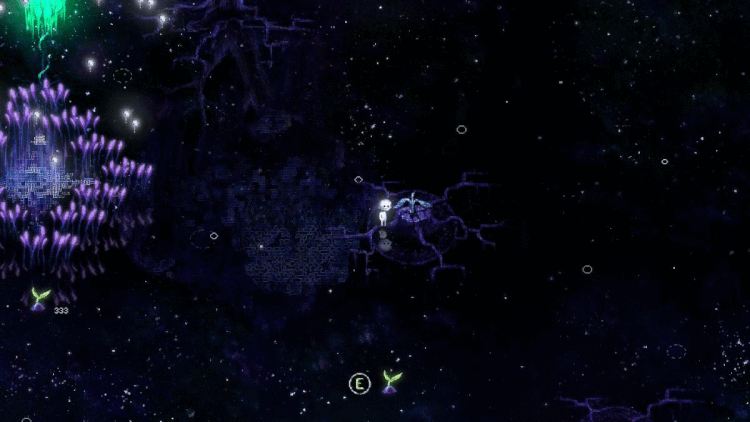Dvader said:
Shit doesnt fly at you, it adds depth. Did no one see Avatar.
You mean the worst movie experience I've ever had? Yes, I saw Avatar.
---
Tell me to get back to rewriting this site so it's not horrible on mobileYodariquo said:Dvader said:Shit doesnt fly at you, it adds depth. Did no one see Avatar.
You mean the worst movie experience I've ever had? Yes, I saw Avatar.
Same here.
Here is some video from that Johnny Lee guy, just to remind everyone. The money on this is at 5:11, skip the rest.
Bascially showing how with head tracking you can get Wii 3D pretty easily and effectively.

Agnates said:Headtracking isn't anything related to the 3D that's all the rage now. Both technologies could be combined to compliment each other, even. But they're unrelated, really. Headtracking didn't catch on much but it's been used to some extend for years, unlike the 3D technologies cropping up these days.
It will probably relate to the 3DS from what we know. (Headtracking that is).

Agnates said:Headtracking is possible on the DSi with its camera. The 3DS likely has some actual stereoscopic 3D tech.
No, stereoscopic 3D uses two images to create the illusion of 3D, and is the basis of those old red/blue 3D style glasses. The 3DS is said to use something being referred to as parallax 3D, which is limited in that the viewer has to be positioned pretty much square to the screen horizontally. Parallax 3D is relatively new, and there's little in terms of details on it, but it is distinct from stereoscopy.
---
Tell me to get back to rewriting this site so it's not horrible on mobileSteelAttack said:Can anybody explain the concept of headtracking to me using very simple terms, like explaining it to a mentally challenged person?
Head tracking is having the camera (your perspective on screen) shift when you move your head.
The 3D effect is created by shifting the background by a lesser degree than the foreground. It's like parallax scrolling in 2D games where you see the background scroll more slowly than the foreground to create a sense of depth. It's only amplified because of how natural it is.
---
Tell me to get back to rewriting this site so it's not horrible on mobileSteelAttack said:Can anybody explain the concept of headtracking to me using very simple terms, like explaining it to a mentally challenged person?
I will explain how humans see 3D later today. Unless someone beats me to it and saves me the trouble.
Hint, we have been playing 3D for years now.
SteelAttack said:Can anybody explain the concept of headtracking to me using very simple terms, like explaining it to a mentally challenged person?
You stick something on your head, or a camera in front of the TV which notes the movement and position of your head.
Then the camera/viewpoint of the game moves in real time to adjust the view of the game. Imagine standing in front of a window and the TV is the window. To look at the flowers in the bed outside the windowsill, you adjust your head up and down.
The game notes the way your head is moving and adjusts the viewpoint.
It gives the sense of depth inside the TV, not a 3D effect outside the TV. Sort of like looking into a fishtank.

aspro said:If you are a VG Press regular, can you please go on the record so we can come back in a couple of years and say "I told you so", one way or the other?.
Very well.
I'm not a big supporter of "3D" but gaming is the only place it seems like it'd properly belong. Imagine playing Metroid Prime 4, looking through Samus' visor and having all the displays and icons popping out at you. Imagine taking damage, and using 3D effects to distort your vision and legitimately disorient you. Imagine equipping the Zero Suit and being able to see a pair of boobs sticking out in front of you.
--------------------------------------------
Listen to Iced Earth and play Doom
Iga_Bobovic said:SteelAttack said:Can anybody explain the concept of headtracking to me using very simple terms, like explaining it to a mentally challenged person?I will explain how humans see 3D later today. Unless someone beats me to it and saves me the trouble.
Hint, we have been playing 3D for years now.
Okay as promised
Humans have various way to perceive depth. Here are the most important ones.
Monocular cues (only one eye needed)
Motion parallax: When moving the relative motion of various object give a clue how far they with relation to each other. The best example is travelling with a train. The trees that are close zoom by fast, while the distant trees almost look stationary. Head movement uses this visual cue, the camera tracks you head and the object will move relative to each other. With this technology you are able to create 3D images that seem really 3D, because you are able to watch a object from different angles. Like peeking up a skirt. The disadvantage is that it only works for one person, if 2 people watch the same screen and they move their heads differently, one of these people will not see the effect.
Size: object that is far away looks smaller than a object close up. When looking at 2 objects of the same size the one that appears bigger is closer. Pretty self explanatory.
Perspective: parallel lines converge to a single point at the horizon.

For example this railway looks like it converges at a single point at the horizon.
You can see these parallel line go towards a single point to a horizon.
Occlusion: If a object blocks the view of another object, than we know that one object is closer than the other object. Again self explanatory.
Shadows: When a bird flies over a field, we can determine its height with relation to the ground because of the shadow. If the shadow is close, than the bird is flying low and vice versa. Shadows also give more clues. For example, if a shadow falls below an object on a flat wall, we know that object sticks out.
Binocular cues (needs two eyes)
Stereopsis: Also known as binocular vision. We have two eyes on front of our head. If we look at an object, our left eye will see a different point of view than our right eye. Our brain takes this information and creates a 3D image.


Look at the cube. You see a different point of views from each eye.
Stereopsis only works at distances up to 10 meters, further than that, and our eyes look straight ahead and the point of view of each eye will be pretty much the same. This is how 3D movies like Avatar work. Our left eye gets different perspective info than our right eye, our brains do the rest. Unlike head movement a whole crowd can watch a movie at the same time, but moving your head will not change the picture and ruin the illusion of 3D. Another problem is that Stereopsis only works at short distances, so if you render distant objects like mountains with this tech, you get weird results.
So as you see gaming have used everything except for Steroepsis. So basically we have been playing 3D for years now.












That's funny because I read a review where they said it was just shit flying at you.
Like this!
BAM. How do you like them apples?
That's from the Favourity IP thread.